iPhone 11 Pro Max Deep Sky Objects Astrophotography
Posted: 19 October 2019
My Starbound Observing Chair, purchased in early 2008 (to replace one that was stolen), had been suffering from splitting of the seat covering after 10+ years of lots of use. I used car radiator hose tape to cover the splits:
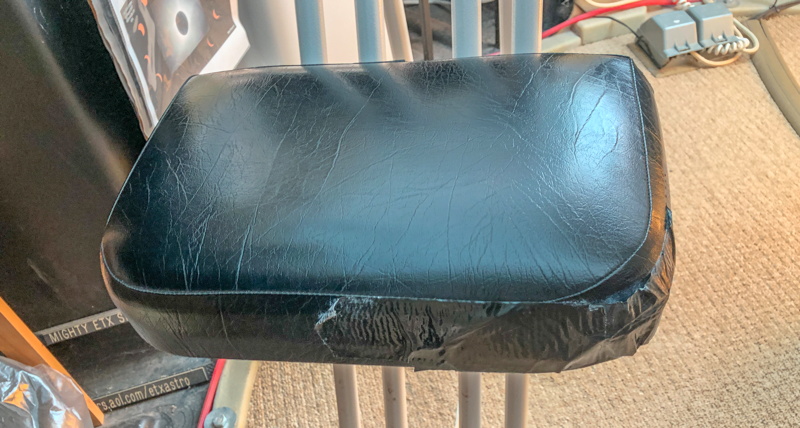
That worked OK as a temporary fix but I frequently had to replace the tape. I considered having the cover professionally repaired by a guy who repairs car seat upholstery, but the cost was about half of what a new chair would cost. I finally ordered a new chair from Starizona in Tucson. Unfortunately, the chair was on backorder for several weeks. It arrived on Wednesday, 16 October 2019, and I put it into the observatory.
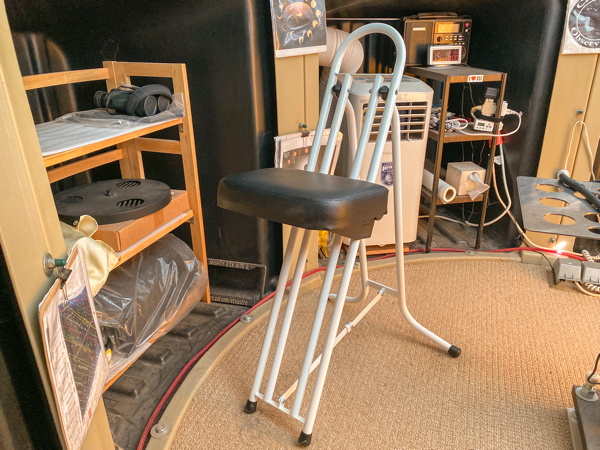
Wednesday, 16 October, was cloudy, but had a nice sunset.
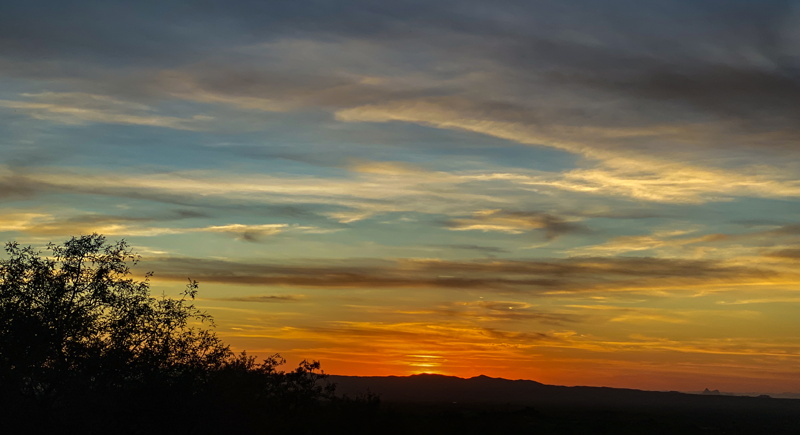
Thursday, 17 October, was mostly cloudy during the day. As sunset approached the sky began clearing but winds came up. Friday, 18 October, dawned mostly cloudy and windy, but cleared mid-afternoon with decreasing wind.
|
Open: Friday, 18 October 2019, 1803 MST Temperature: 81°F |
Session: 1397 Conditions: Clear |
Equipment Used:
12" f/8 LX600 w/StarLock
2" 24mm UWA eyepiece
2" 30mm eyepiece
1.25" 15mm eyepiece
Camera:
iPhone 11 Pro Max
1810 MST: LX600 ON, StarLock OFF, High Precision OFF.
1813 MST: viewed the planets Mercury and Venus, low in the southwestern sky, 102X.
1820 MST: viewed Jupiter and 3 moons and then Saturn and four of its moons, 102X.
The sky was hazy and seeing was not very good.
Next, I SYNCed the observatory clock to WWV time signals.
1823 MST: High Precision ON.
Slewed the 12" telescope to M17 (Swan Nebula), which was not yet visible. Began preparing for Deep Sky Object (DSO) astrophotography using the iPhone 11 Pro Max while waiting for Astronomical Twilight to end (1910 MST).
1836 MST: M17 was now visible, 102X and 81X. Nice views.
1848 MST: viewed M11 (Wild Duck Cluster), 81X. SYNCed the AutoStar on M11. Slewed back to M17 to begin imaging. Locked the telescope primary mirror.
Mounted the iPhone on the 2" 30mm eyepiece using the Levenhuk adapter. Imaging would be done with the iOS apps NightCap Camera and the Apple Camera app (using Night Mode) to compare the results. I used the Apple Earbuds as a remote shutter release and the iPhone 1X lens.
1910 MST: StarLock ON.
The following afocal 81X images are StarLock autoguided and taken with the app and settings indicated.
M17 (Swan Nebula), NightCap Camera (Long Exposure, Light Boost, ISO 12288, 1sec, 1 minute exposure)
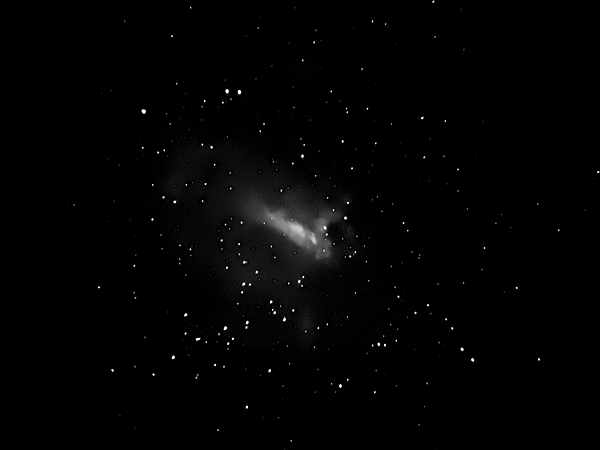
M17 (Swan Nebula), Camera (Night Mode, 28 seconds exposure)
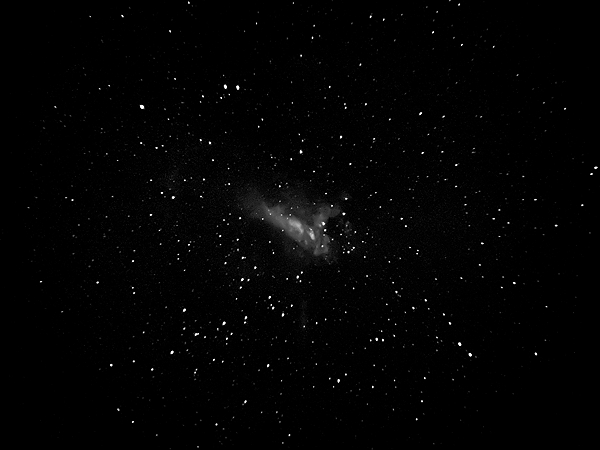
M11 (Wild Duck Cluster), NightCap Camera (Long Exposure, Light Boost, ISO 6400, 1sec, 1 minute exposure)
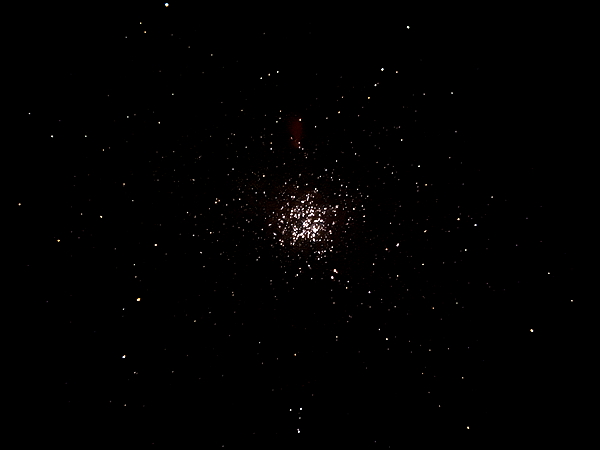
M11 (Wild Duck Cluster), Camera (Night Mode, 28 seconds exposure)
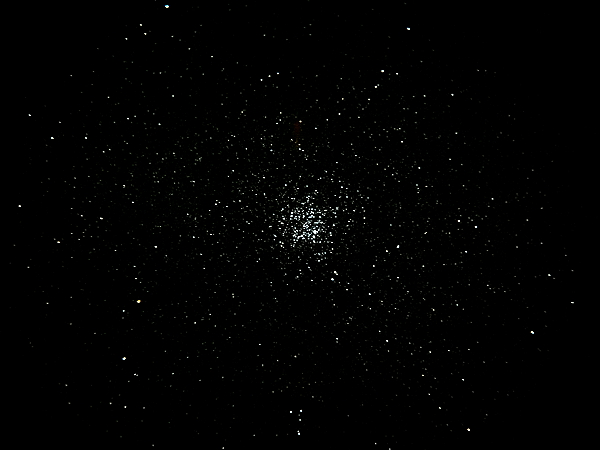
I switched to the 1.25" 15mm eyepiece (163X) and viewed M11. Then slewed to M13 (Great Globular Cluster in Hercules). These are afocal 163X, StarLock autoguided images.
M13 (globular cluster), NightCap Camera (Long Exposure, Light Boost, ISO 6400, 1sec, 1 minute exposure)
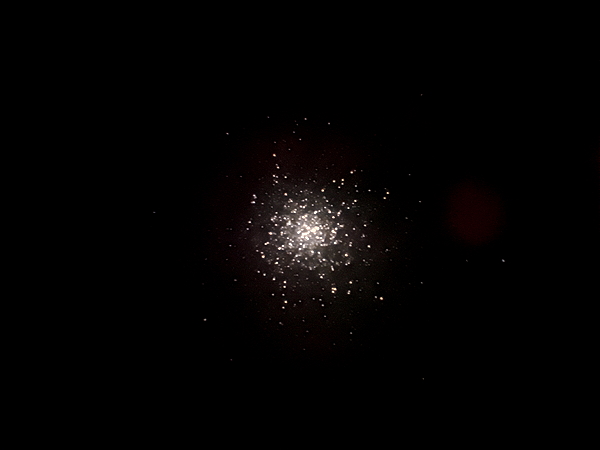
M13 (globular cluster), Camera (Night Mode, 28 seconds exposure)
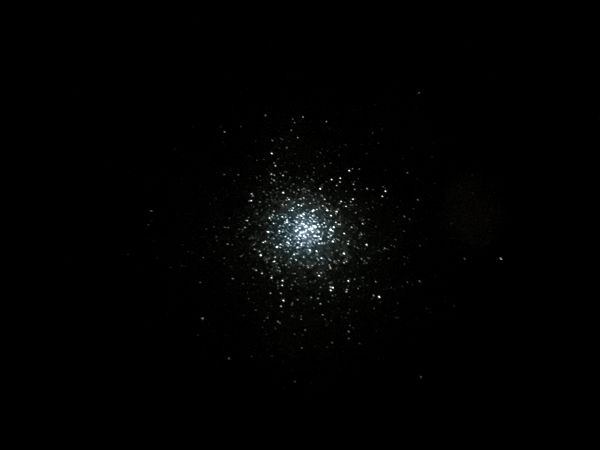
M92 (globular cluster), NightCap Camera (Long Exposure, Light Boost, ISO 6400, 1sec, 30 seconds exposure)
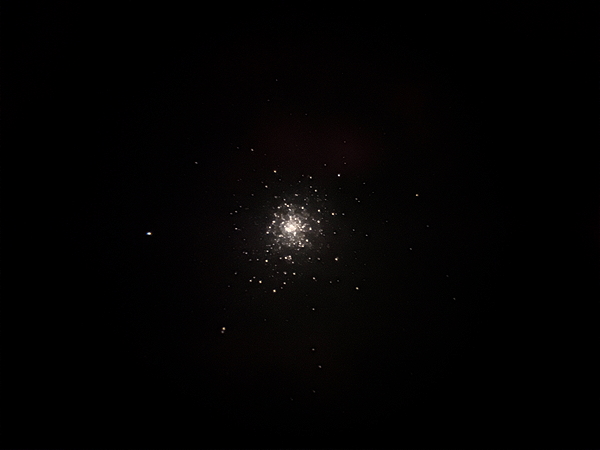
Albireo (double star), NightCap Camera (Long Exposure, Light Boost, ISO 32, 1sec, 2 seconds exposure)
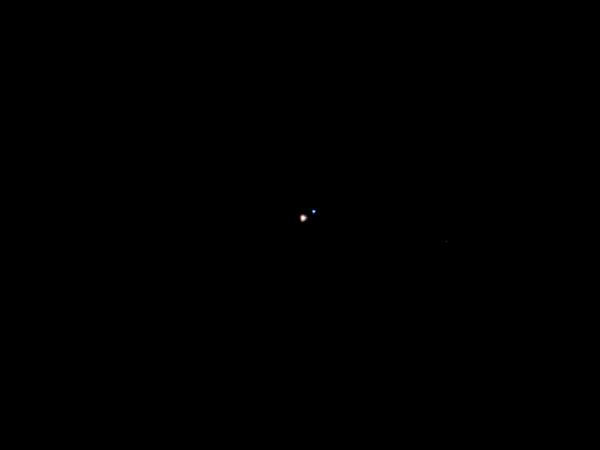
M56 (globular cluster), NightCap Camera (Long Exposure, Light Boost, ISO 12500, 1sec, 1 minute exposure)
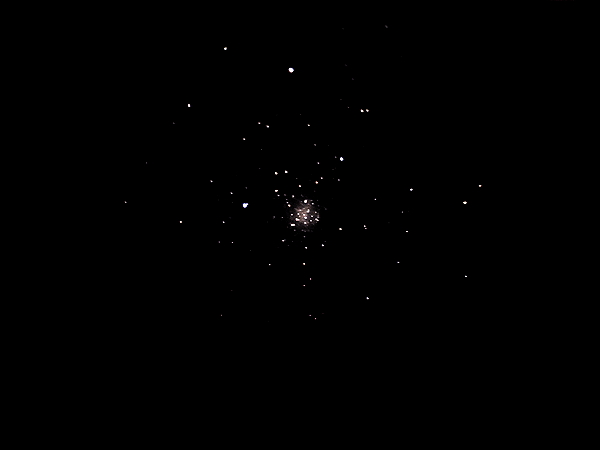
M57 (Ring Nebula), NightCap Camera (Long Exposure, Light Boost, ISO 12500, 1sec, 1 minute exposure)
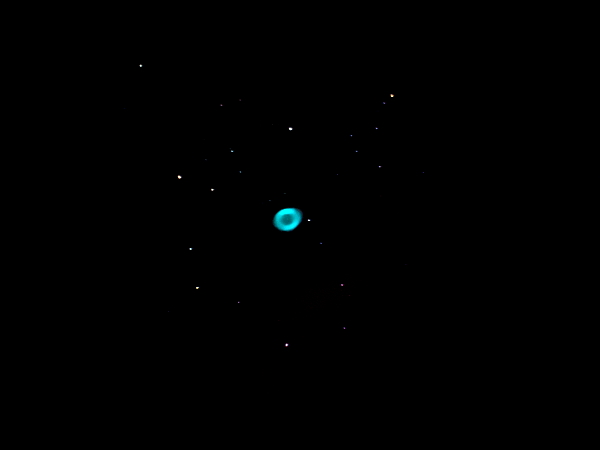
M57 (Ring Nebula), Camera (Night Mode, 28 seconds exposure)
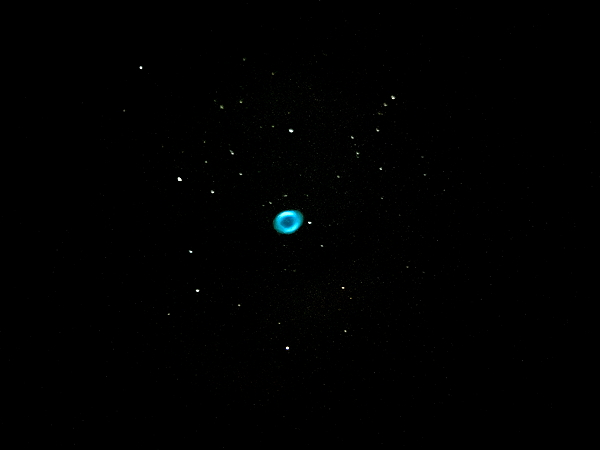
I removed the iPhone and viewed M57, 163X and 81X.
The full-frame photos above show vignetting at the corners. That's normal with afocal imaging using the 1X camera lens. I mounted the iPhone on the 2" 30mm eyepiece using a prototype Phone Skope case for the iPhone 11 Pro Max. The Phone Skope case I used with the iPhone 8 Plus was too small. The prototype case only allowed imaging with the 2X camera lens. However, using the 2X lens eliminated the vignetting, as seen in this full-frame StarLock autoguided image taken with NightCap Camera (Long Exposure, Light Boost, ISO 8064, 1sec, 1 minute exposure), doubled to afocal 163X.
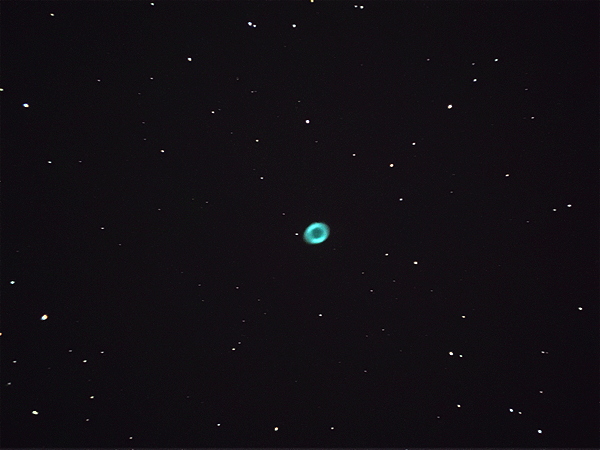
I removed the iPhone from the eyepiece and viewed the Double Cluster, 81X.
2050 MST: High Precision OFF.
Mounted the iPhone on the 30mm eyepiece using the Levenhuk adapter for these afocal 81X, StarLock autoguided images using the 1X camera lens.
Double Cluster, NightCap Camera (Long Exposure, Light Boost, ISO 3200, 1sec, 30 seconds exposure)
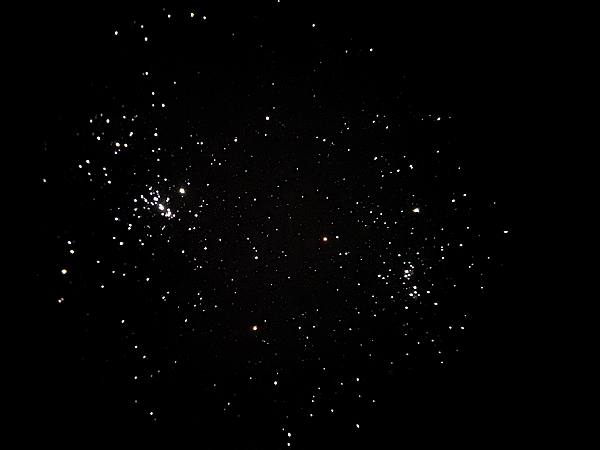
Double Cluster, Camera (Night Mode, 28 seconds exposure)
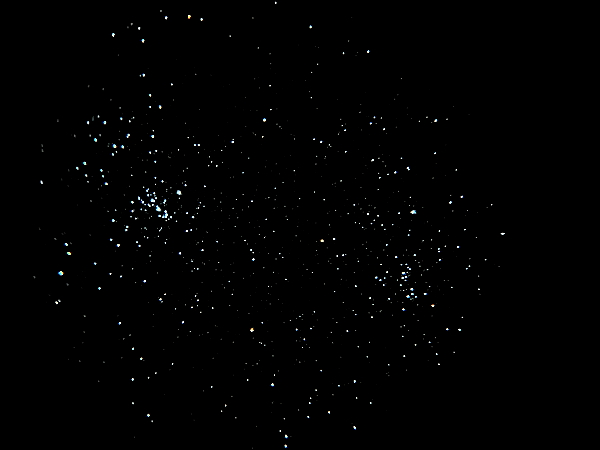
As seen from the photos, NightCap Camera is an excellent app for imaging DSOs. With the iPhone 11 Pro Max allowing for a 1 second shutter speed vs the 1/3sec with my old iPhone 8 Plus, I get 3 times more light captured. For bright objects, the Camera "Night Mode" works pretty well.
2100 MST: StarLock OFF.
Viewed the Double Cluster, 81X and 102X.
2108 MST: LX600 OFF.
|
Close: Friday, 18 October 2019, 2117 MST Temperature: 58°F |
Session Length: 3h 14m Conditions: Clear |
Comments are welcome using Email. Twitter users can use the button below to tweet this report to their followers. Thanks.
Cassiopeia Observatory Home Page
Copyright ©2019 Michael L. Weasner / mweasner@me.com
URL = http://www.weasner.com/co/Reports/2019/10/19/index.html
